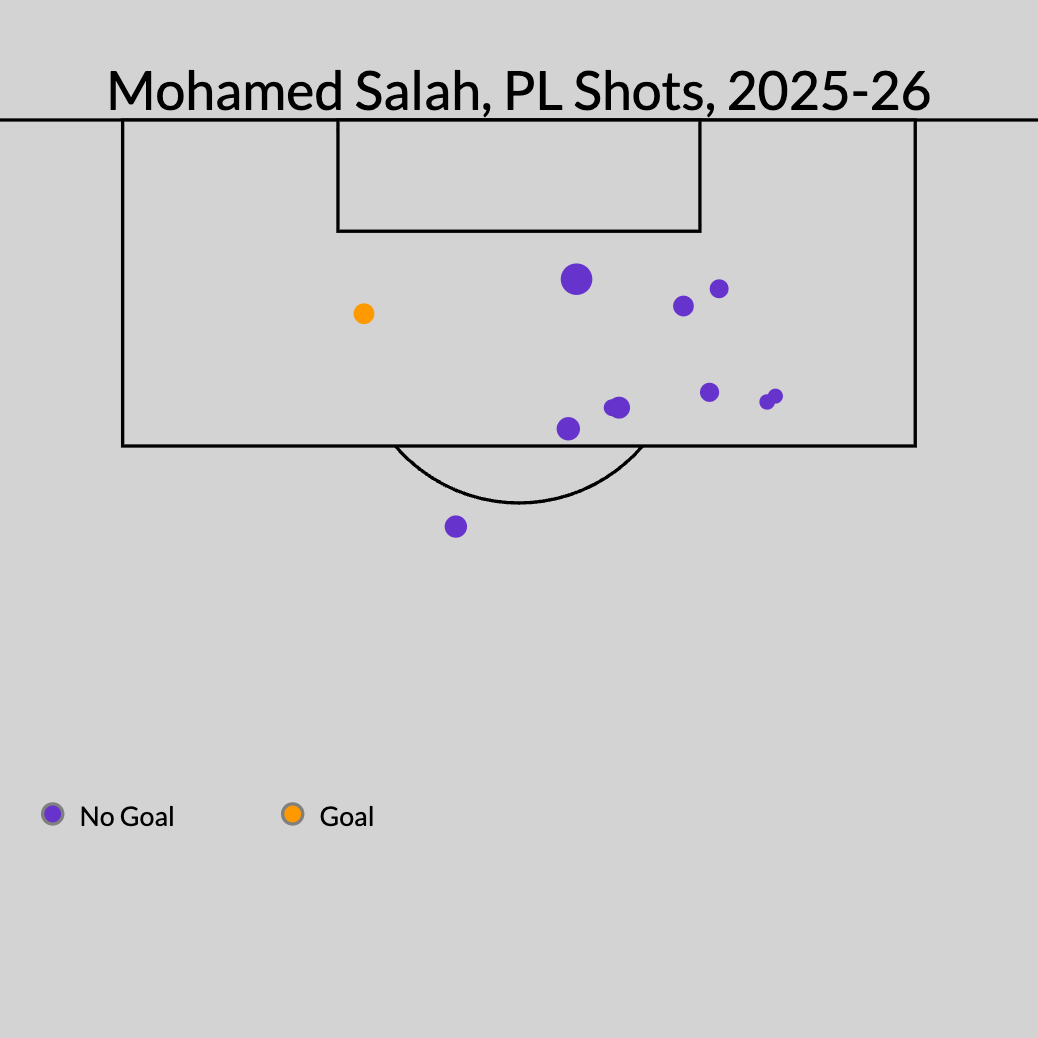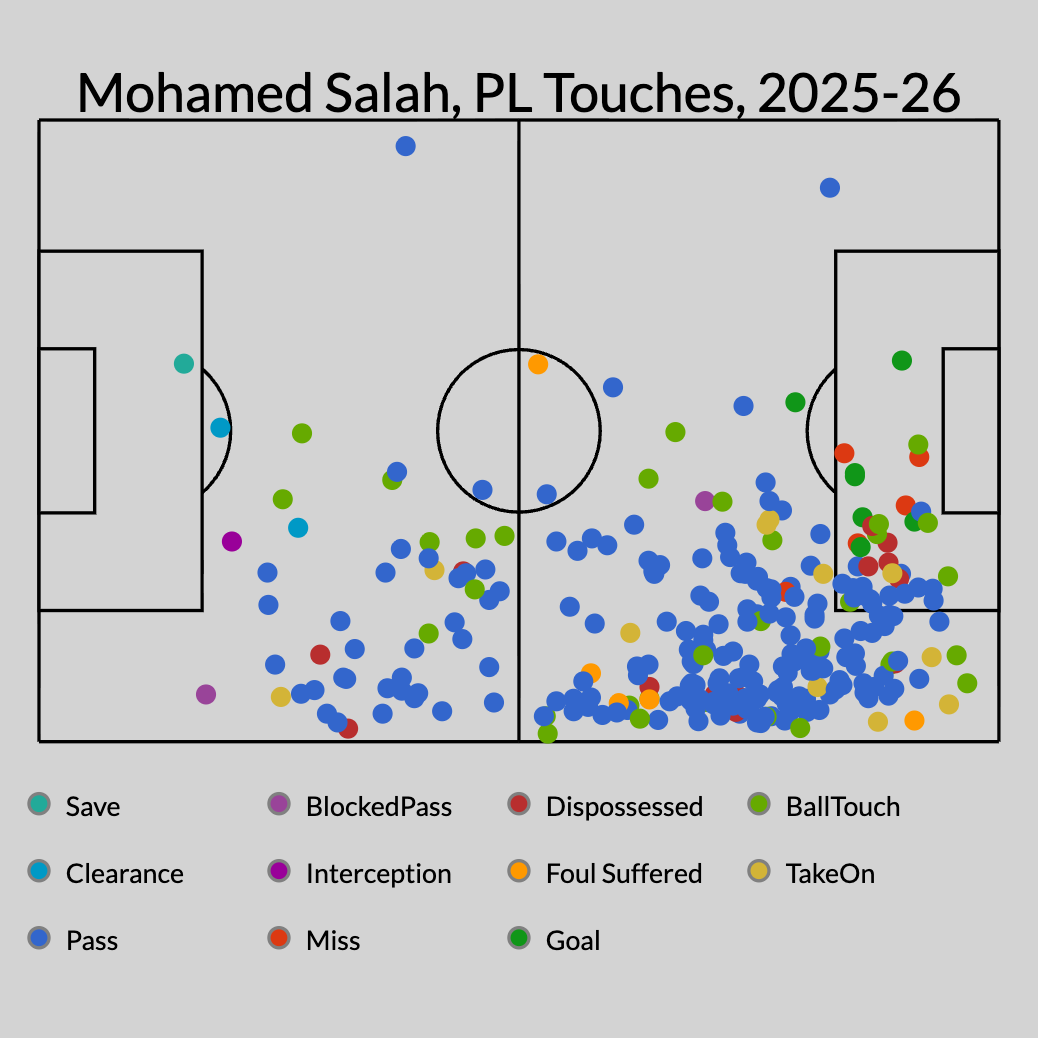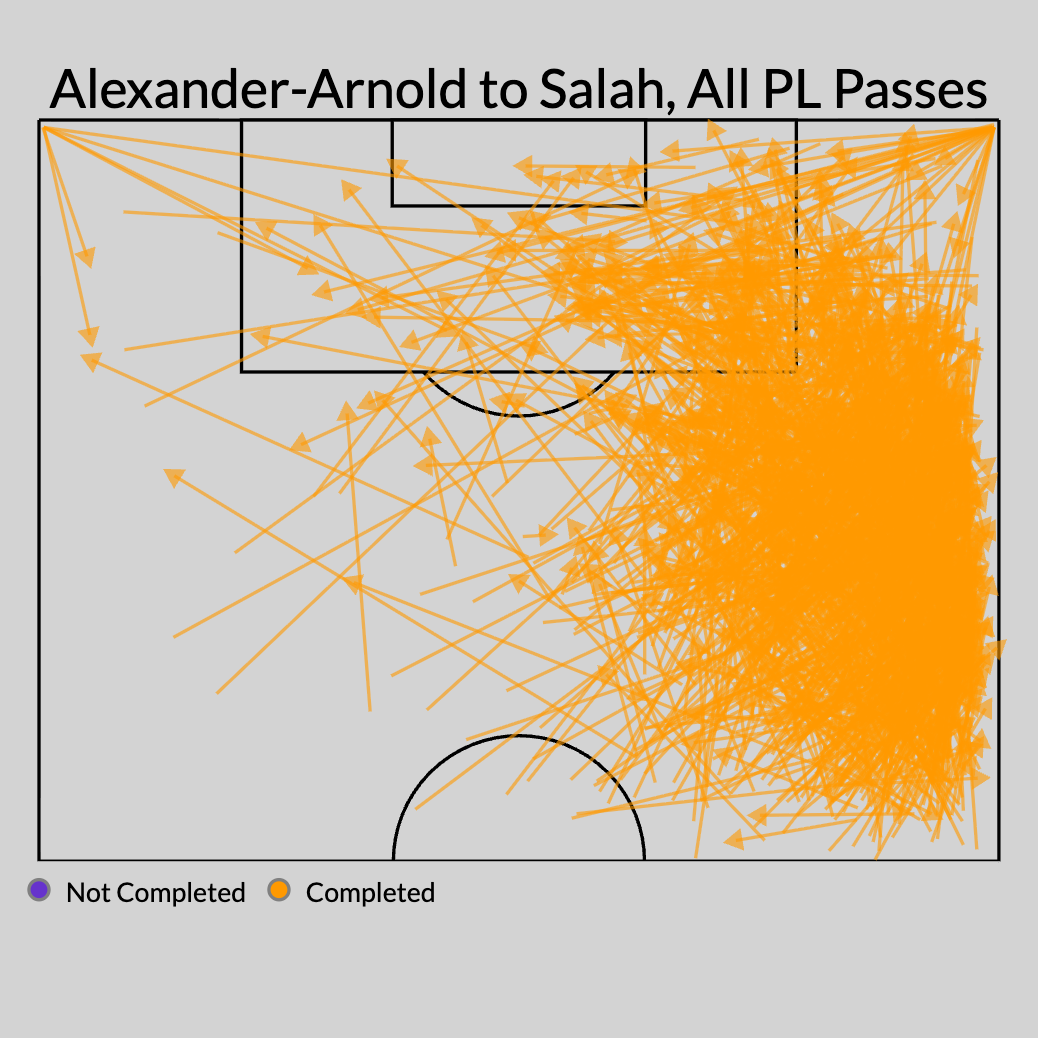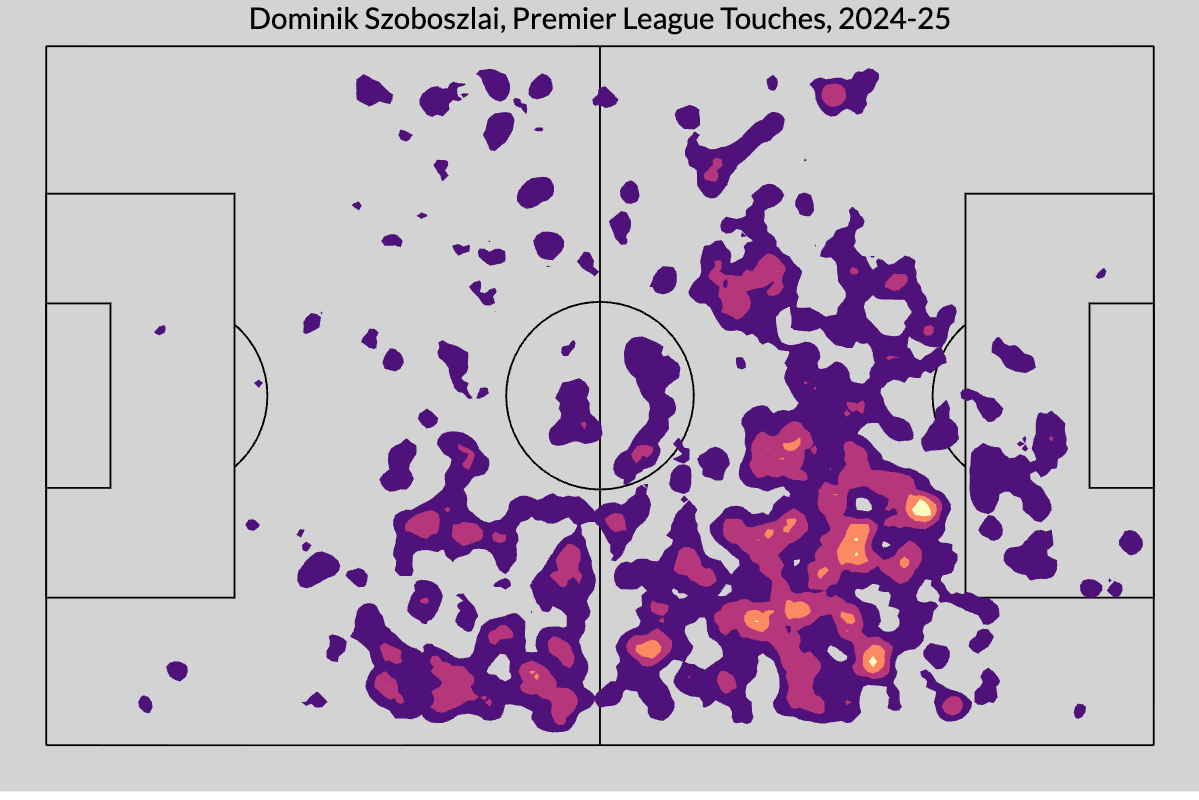Nothing about Liverpool‘s 2025-26 season has made much sense.
Two weeks ago, the Reds were perfect atop the Premier League table, already odds-on favorites to win the league before the calendar even flipped to October. They had a five-point lead over second place — something that had only ever happened one other time in league history that early into the season.
And yet, no one really felt that great about it. They’d won four of the five league games with goals in the 80th minute or later, and they’d won their Champions League and Carabao Cup matches with goals in the 92nd and 85th, respectively.
That couldn’t continue, but neither can this. They’ve since lost two straight Premier League matches to goals in the 97th and 95th minutes. Last season, they lost two Premier League games — total — before they clinched the league title. Throw in the 1-0 loss to Galatasaray in the Champions League last week, and they’ve lost three games in a row for the first time since 2023. Their manager, Arne Slot, has now lost three straight games for the first time in his career.
Slot has been searching for answers, too, though that process started before the losing streak began. Despite seven wins from the first seven, he changed the lineup and approach significantly for the loss to Crystal Palace. Against Galatasaray, he started last season’s attacking midfielder, Dominik Szoboszlai, at right-back, and Jeremie Frimpong, signed this past summer to replace last season’s right-back, at right wing. And in the most recent loss to Chelsea, Slot benched Florian Wirtz, the once-club-record €125-million signing from Bayer Leverkusen.
– Is it good for Man City that Haaland is so dominant?
– Connelly: Making sense of Champions League MD2
– Regrading every major men’s summer transfer
What is Liverpool’s best XI? How good is this team? Is it time to use the “c-word“? Can they ever play a normal game? Should we really be freaking out about the defending champions being just one point back of first place? Will Florian Wirtz ever score a goal? Might he one day register an assist? Alexander Isak, hello? What happened to Alexis Mac Allister this summer? Is their best right-back actually their best attacking midfielder?
There’s all kinds of uncertainty at Anfield right now, but through seven games, there’s at least one thing we can say for sure: If Mohamed Salah doesn’t start playing like Mohamed Salah sometime soon, then none of this other stuff really matters.
Where did Salah’s shots go?
Last season, Liverpool had arguably the best player in the world, in the midst of arguably the greatest Premier League season of all time, playing on the right wing. This season, they’ve got something between Brenden Aaronson and Daniel Ballard out there. At least, that’s where Salah’s per-90-minute attacking production ranks in the Premier League through seven games — Aaronson is averaging 0.33 non-penalty expected goals plus expected assists per 90 minutes, Ballard is at 0.35, and Salah is sitting at 0.34.
This is somewhat disingenuous, of course. There’s still a bunch of other stuff Salah does, and his gravity on the field alone is worth more than the shots and assists produced by other players. Plus, attacking is down across the board this season. Erling Haaland is the only player in the Premier League who’s producing at a star level; both of Arsenal‘s right wingers, Bukayo Saka and Noni Madueke, are almost exactly in line with Salah’s underlying performance so far this season.
2:40
Slot: Liverpool definitely deserved a draw vs. Chelsea
Arne Slot reflects on Liverpool’s dramatic 2-1 loss to Chelsea in the Premier League.
But, c’mon — this is Mo Salah! He’s an all-time great because he produces tons of goals and assists from the wing, and then he also does all of the other stuff, too. Last season, Salah averaged 0.87 npxG+xA per 90 minutes. And for his Liverpool career, he’s averaged 0.79.
Salah’s miss against Chelsea early in the second half — after a beautiful, spinning, no-look flick from Wirtz — seemed like the moment the wider soccer world started questioning Salah’s play this season. But focusing on that miss is, um, missing the point.
If Salah had been missing chances like that left and right, I could just tell everyone to take a deep breath, relax, and watch the goals eventually start to come. Salah has never been a particularly efficient finisher anyway; he’s scored 8.1 goals more than expected over his eight-plus seasons at Liverpool. One goal more than expected per season is normal for just about any starting attacker in a major league.
No, the bigger issue is that Salah has only attempted 11 non-penalty shots so far this season.

Last season, Salah had already attempted 22 shots through seven games. His previous low at this point was 19, in 2022-23. His current xG total is 1.18. Last season, it was 3.31, and the previous low was 2.59 in 2020-21.
The concerning thing about those numbers is, well, that they’re both 50% declines from last season — and still significantly lower than his previous slowest starts. But beyond that? The concerning thing is that Salah’s previous worst shots and xG seasons were Liverpool’s only two “bad” seasons since 2017-18: the 2020-21 season where they rallied late to scrape into the Champions League places, and the 2022-23 campaign when they missed the top four all together.
As Salah goes, so does Liverpool.
In addition to all the goals and assists, Salah has been as good as anyone at both moving the ball into the penalty area and getting on the ball inside of the penalty area. Last season, he led the Premier League in passes into the penalty area with 93, and he nearly lapped the Premier League in touches inside the penalty area. Salah recorded 356; next-most was Antoine Semenyo‘s 191.
This season, Salah is third in the league for passes into the box and tied for seventh in box touches. That’s still very good, and it suggests that he’ll likely start getting more shots, creating better chances for his teammates, or both. But it’s still far off where he was last season.
His passes into the box have dipped from 2.48 per 90 to 1.86, but the much bigger — and much more worrying decline — comes with his touches inside the box. Last season, he averaged 9.49 touches inside the penalty area. This year, it’s down to 4.71.

Through seven games last year, Salah touched the ball 75 times inside the box. This season, he’s only at 38. The previous low at this point in the season was 45 in 2017-18. Of course, he went on to win Premier League Player of the Year and score 31 non-penalty goals that season, but he was also 25 at the start of that campaign. He turned 33 this past June.
It’s tempting to look at the large drop-off in penalty-box touches and conclude this is an age-related decline. For nearly a decade, Salah was able to do three traditional jobs — the center forward, the winger, and the attacking midfielder — all by himself. He’d get on the ball in the most dangerous area of the field and score goals, he’d drive past defenders with the ball at his feet, and he’d create chances with his vision, technical skill, and ability to manipulate space.
Now Salah is 33, and maybe he just doesn’t have the legs to create and get near the goal, game after game. Not only are the shots down, but so is the dribbling. He’s attempted eight take-ons and completed one — both rates of attempt and success that would easily be career-lows for him at Liverpool.
Per Gradient’s physical data, Salah’s running profile has been remarkably consistent. Since 2020-21, he’s averaged about 20 sprints (runs north of 25 kilometers per hour) and 60 high-speed runs (runs between 20 and 24 km/hr) per 90 minutes. Those are his exact numbers for this season, too. The one notable drop-off is in Salah’s max speed (the average of his five highest recorded speeds). This season, he’s at 32.53 km/hr, still good enough for the 93rd percentile at his position, but still a dip from last season’s 34.29. He’d never been below 33.67 in any of the previous five seasons.
There’s likely been some decline, but still not enough to explain the massive drop-off in overall output and involvement around goal. Instead, we have to look at the changes in his environment.
The simplest explanation for Salah’s decline: Liverpool are touching the ball way less often in the attacking third. This is part of a wider trend in the Premier League, where more and more teams are fighting to prevent the biggest clubs from camping out in their half, but Liverpool are averaging 185 touches in the attacking third this season. Since Salah joined the club, they’ve averaged 215 attacking-third touches and have never been below 200 in a single season.
More specifically, though: there’s no more Trent Alexander-Arnold.
In terms of pure attacking force, Salah and TAA are the best winger-fullback combo the Premier League has ever seen. (I’d put it up against any duo in any league, outside of Lionel Messi and Dani Alves at Barcelona.) But we rarely ever saw them without each other, save for periods when someone was out injured.
Alexander-Arnold became a starter in 2017-18, the season Salah arrived from Roma. Over that time, he completed 1,161 forward passes to Salah — 400 more than any other combination on Liverpool and, by my best guess, more than any other combination in the Premier League. If we look at all passes in the attacking third, in any direction, then Salah’s 805 to Alexander-Arnold makes the most prolific combo — 200-plus more than the second-most prolific duo: Alexander-Arnold to Salah.

Their pairing lasted so long that we have advanced statistics that didn’t exist when they first started playing together. One of which is expected possession value, a number that tries to determine how much every action on the field increases or decreases a team’s chances of scoring. Over the past three seasons, TAA’s passes to Salah created 5.57 goals worth of xPV — the highest-value combo at the club. Last season, that number was 1.55, the club’s second-most valuable combo, and last season in particular is worth looking at in a little more depth.
Here were the club’s 10 highest-value pass combos for 2024-25:
• 1. Salah to Szoboszlai: 2.10
• 2. TAA to Salah: 1.55
• 3. Salah to Luis Díaz: 1.44
• 4. Szoboszlai to Salah: 1.43
• 5. Diaz to Salah: 1.40
• 6. Salah to Cody Gakpo: 1.20
• 7. Gakpo to Salah: 1.15
• 8. Andy Robertson to Gakpo: 1.12
• 9. Ryan Gravenberch to Salah: 1.10
• 10. Salah to Darwin Núñez: 1.01
Remember: this was with Szoboszlai playing as an attacking midfielder shaded toward the right side, a role he’s barely featured in this season.
So, in a sense, Liverpool’s five-most dangerous duos from last season no longer exist. And strangely, Gakpo and Salah — the one remaining, consistent link-up from last season’s top 10, and the best two-way pairing other than Szobo-Salah — just haven’t clicked this year. Gakpo to Salah is Liverpool’s 12th-most-dangerous pass combo this season, while Salah to Gakpo is 54th.
Instead, here’s what this season’s top 10 looks like so far:
• 1. Gakpo to Hugo Ekitike: 0.42
• 2. Gakpo to Milos Kerkez: 0.40
• 3. Curtis Jones to Isak: 0.40
• 4. Szoboszlai to Wirtz: 0.33
• 5. Wirtz to Ekitike: 0.31
• 6. Salah to Wirtz: 0.30
• 7. Salah to Jones: 0.24
• 8. Gakpo to Szoboszlai: 0.23
• 9. Szoboszlai to Gakpo: 0.21
• 10. Connor Bradley to Salah: 0.21
Wirtz, it seemed, was supposed to replace both Szoboszlai and Alexander-Arnold — the former in position, the latter in role — or, at least, that’s how it looked from the outside. He’d be the team’s new attacking midfielder on the lineup sheet, but rather than crashing the box and pressing like mad as Sozboszlai did in that role, he’d replace the creativity in buildup play and around the goal that Alexander-Arnold offered.
Instead, Wirtz has been more of a utility player rather than a run-everything-through-him star. Sure, he hasn’t scored or assisted a goal yet, but he’s pressing well, he’s been a good outlet between the lines, he’s passing and carrying the ball forward, he’s created as many chances as Salah, and he’s averaging more shots per 90 minutes. The two actually have identical xG+xA numbers through seven games — and that’s despite Wirtz playing all of his minutes as a midfielder rather than an attacker.
But even if Wirtz has been better than his empty goals and assists columns suggest, it’s still not working collectively. The Wirtz-to-Salah pass combo has generated just the 20th-most possession value of any pairing on Liverpool. Without Alexander-Arnold at right back and Szoboszlai forming the third point on the triangle with Salah, Liverpool have removed two of the parts of the system within which Salah became the best player in the world for a large part of last season.

Unlike Szoboszlai last season, Wirtz has interpreted the role like a much more traditional attacking midfielder, and that’s led to a near-equal distribution of his touches on both sides of the field. It’s also led to Gakpo featuring prominently in all of Liverpool’s most dangerous attacks this season. While Liverpool’s attacking-third touches are down, his are up. Overall, Gakpo is taking 10 more touches per game than Salah, and that’s after he took the fewest touches per game among Liverpool’s starters last season.
Now, while an unpredictable, more diverse attack is great in theory, plenty of teams across all sports have discovered that the best way to win games, in practice, is to get your best players as many possessions as possible. Baseball teams are putting their best hitters, like the Los Angeles Dodgers with Shohei Ohtani, at the top of their lineups so they get more chances at the plate. Come playoff time, basketball teams run as many plays as they can through Nikola Jokic so he has as many chances as he can to affect the outcome. The rise of the passing offense in the NFL builds on the idea of letting someone like Josh Allen have a maximum number of opportunities to break a big play across four quarters.
Liverpool’s success last year was built on this, too: just run the ball through the right side, over and over again, which in turn opened up space for secondary contributors like Gakpo and Diaz on the left. It also made Liverpool’s possessions predictable in a good way. If they lost the ball, they tended to lose the ball in the same way, so everyone knew how to recover or knew where danger might suddenly pop.
More than that, though, it made sure that Liverpool’s two best in-possession players were at the heart of as many possessions as possible, at the same time. And with Szoboszlazi, they had a third player willing to do all the thankless off-ball running to give them just a little more space.
This season, their two best players on the ball are rarely interacting. Salah’s found Wirtz with dangerous passes a few times — and there was that outrageous backheel against Chelsea by Wirtz — but there’s just been nothing consistent between the two of them. There was clearly a kind of exponential effect between Salah and Alexander-Arnold’s interactions, but since Salah and Wirtz are so rarely involved with the other one’s touches, they’ve made their own touches much less valuable than they should be and than they could be.
Perhaps this is all down to age and if it is, then Salah needs to find a new way to play.
1:39
Are Liverpool in a crisis after three consecutive defeats?
Janusz Michallik reacts to Liverpool’s late 2-1 loss to Chelsea in the Premier League.
As he got older and less able to drive forward with the ball at his feet right around his 29th birthday, Salah became one of the best attacking-third creators on the planet. If he can’t do that and score goals anymore, then the logical next step is just to move closer to the goal. Let Wirtz pass the ball into the box, live with Gakpo getting more touches than you, and start crashing the back post. Follow this idea far enough, and you can start to see some kind of 3-5-2 possibility with Salah playing as a forward next to Isak, Wirtz behind them, and Gakpo as an attacking wingback out left.
But while there was always a risk in signing even a superstar like Salah to a contract extension ahead of his age-33 season, it still seems quite unlikely that he’d suddenly go from Best in the World to Mediocre in the Premier League over a single summer. There’s almost definitely some age-related decline here, but the much bigger explanation is likely the change in Salah’s surroundings.
Alexander-Arnold is gone, and no one else on the team can replace what he gave to Salah from his position. If this team eventually gets back to the level they were at last year — a consistent, best-team-in-the-world contender that doesn’t need to win every game in the last 10 minutes — then it won’t be without Salah playing like one of the best players in the world. And if that’s going to happen, it’s only going to happen if he and Wirtz find a way to play together.
For Liverpool, that idea might be equal parts thrilling and terrifying. After all, it takes time for these relationships to develop. Alexander-Arnold and Salah played a total of 3,138 passes to each other in the Premier League.
Wirtz and Salah? They’re only up to 45.
